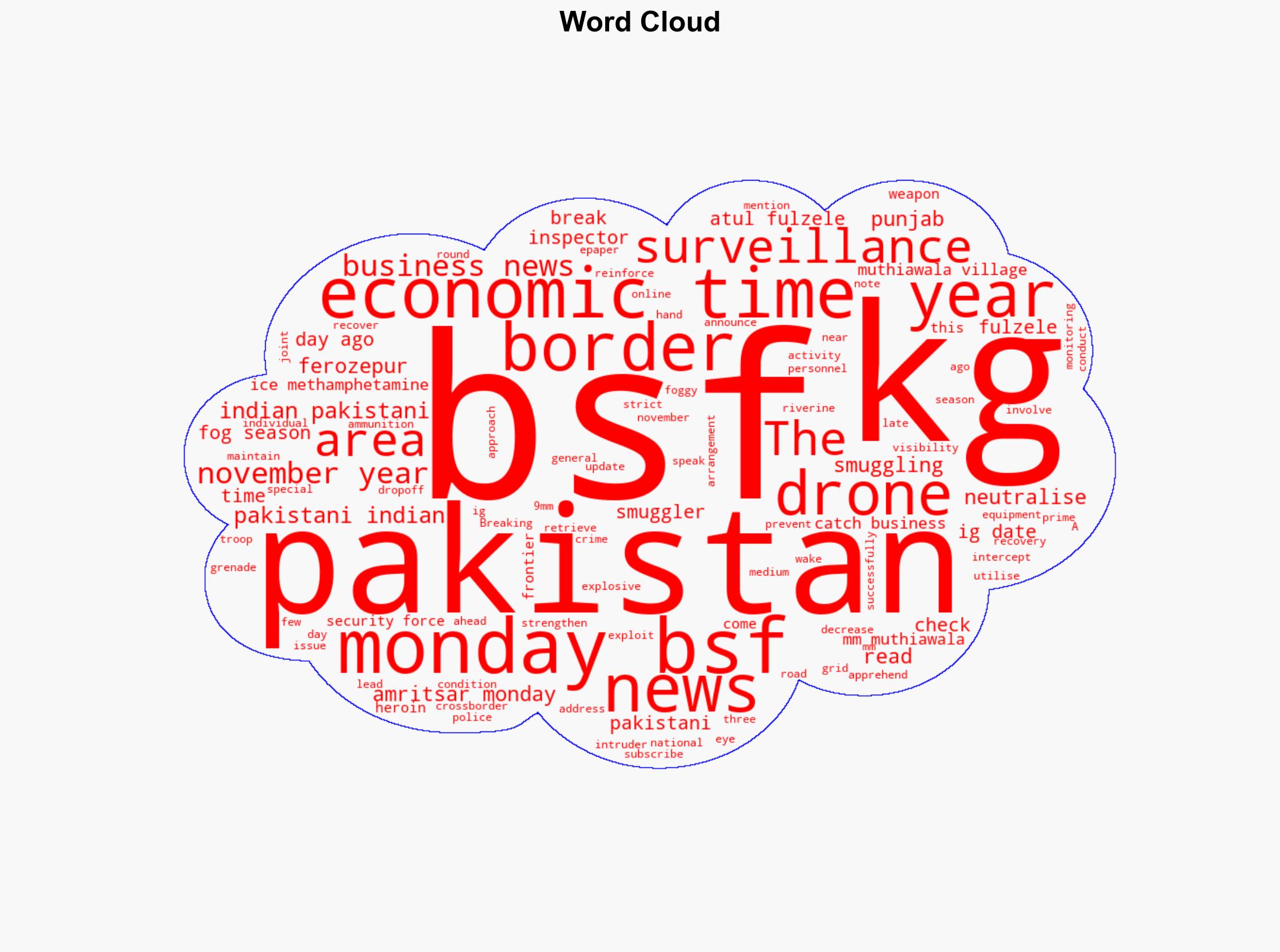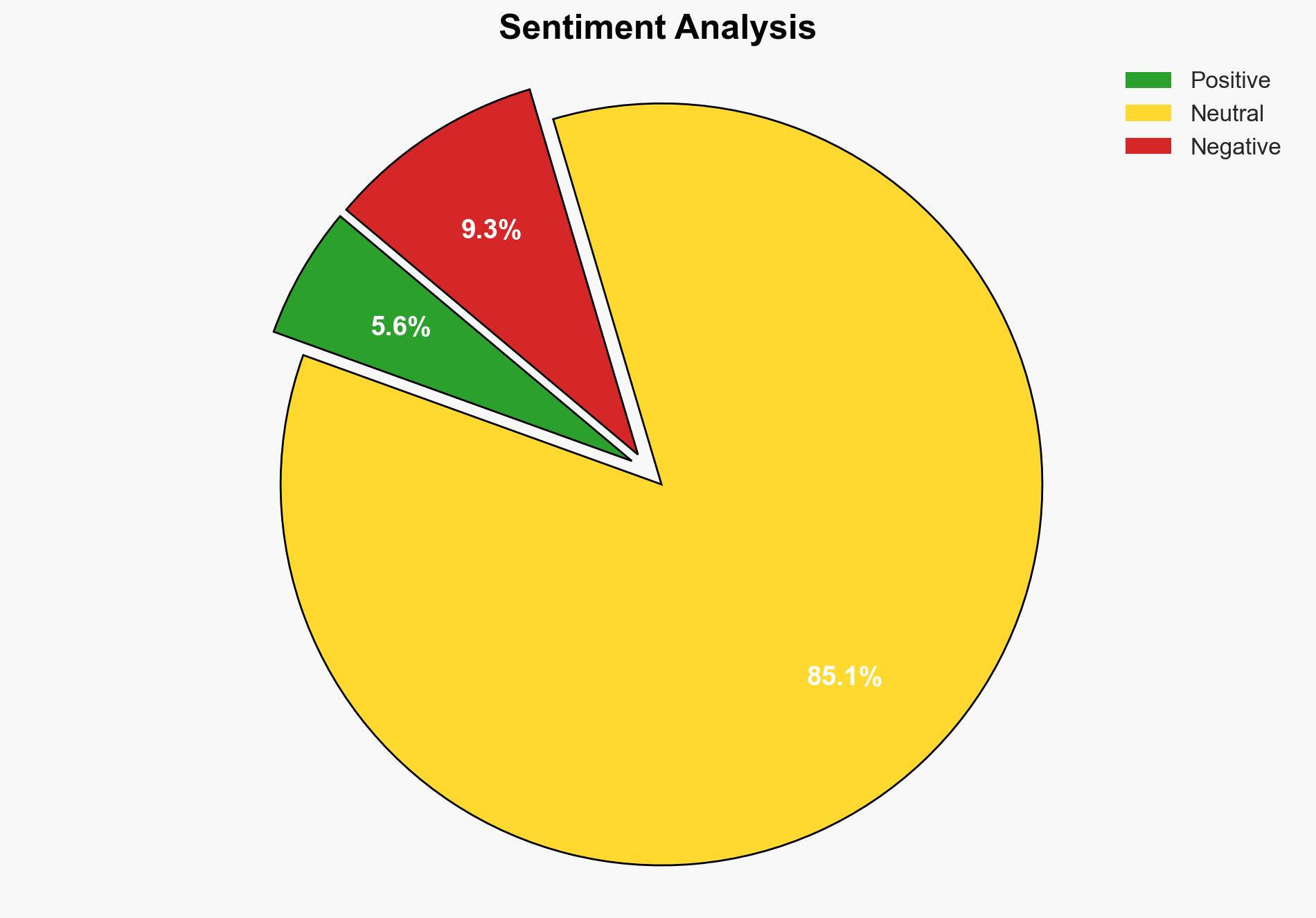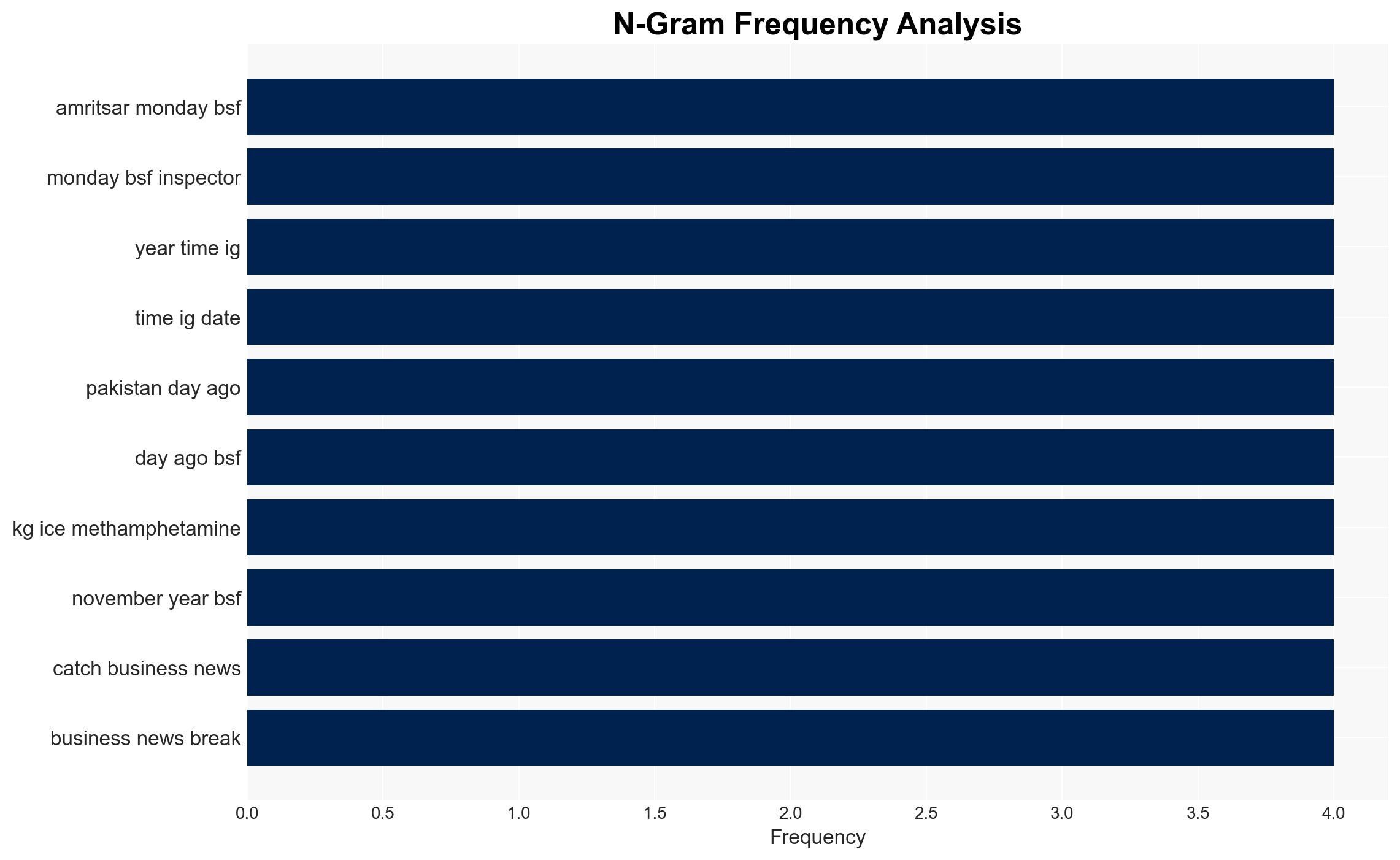255 Pakistani drones neutralised so far this year BSF – The Times of India
Published on: 2025-11-18
AI-powered OSINT brief from verified open sources. Automated NLP signal extraction with human verification. See our Methodology and Why WorldWideWatchers.
Intelligence Report:
1. BLUF (Bottom Line Up Front)
With a moderate confidence level, the most supported hypothesis is that the increased use of drones by Pakistani entities is a strategic shift towards more sophisticated smuggling operations across the India-Pakistan border. The Border Security Force (BSF) should enhance technological capabilities and cross-agency collaboration to mitigate this threat.
2. Competing Hypotheses
Hypothesis 1: The increase in drone activity from Pakistan is primarily driven by non-state actors engaged in smuggling operations, exploiting technological advancements to bypass traditional border security measures.
Hypothesis 2: The drone incursions are state-sponsored activities aimed at destabilizing the region by facilitating cross-border smuggling of narcotics and weapons, thereby indirectly supporting insurgent activities.
Hypothesis 1 is more likely given the evidence of intercepted drones carrying narcotics and weapons, which aligns with known smuggling patterns. However, the possibility of state sponsorship cannot be entirely ruled out due to the strategic implications of such activities.
3. Key Assumptions and Red Flags
Assumptions: It is assumed that the BSF’s reports are accurate and comprehensive. There is also an assumption that all intercepted drones were intended for smuggling purposes.
Red Flags: The potential for misinformation or exaggeration in reports to justify increased security measures or funding. The lack of direct evidence linking state actors to drone operations is a significant gap.
4. Implications and Strategic Risks
The continued use of drones for smuggling poses a significant threat to regional stability. It could lead to increased tensions between India and Pakistan, especially if state involvement is suspected. There is also the risk of escalation into cyber or informational warfare if either side perceives an existential threat. Economically, increased smuggling can undermine local economies and fuel organized crime.
5. Recommendations and Outlook
- Enhance drone detection and neutralization technologies along the border.
- Increase intelligence-sharing and joint operations with neighboring countries and international partners.
- Develop a comprehensive strategy that includes diplomatic engagement with Pakistan to address cross-border issues.
- Best-case scenario: Successful mitigation of drone threats through technological and diplomatic means, leading to reduced smuggling activities.
- Worst-case scenario: Escalation of tensions leading to military confrontations or increased insurgent activities supported by smuggling operations.
- Most-likely scenario: Continued drone incursions with periodic successes in interception, requiring ongoing vigilance and adaptation of strategies.
6. Key Individuals and Entities
BSF Inspector General Atul Fulzele is a key figure in the current border security operations and strategic planning against drone incursions.
7. Thematic Tags
Structured Analytic Techniques Applied
- Cognitive Bias Stress Test: Expose and correct potential biases in assessments through red-teaming and structured challenge.
- Bayesian Scenario Modeling: Use probabilistic forecasting for conflict trajectories or escalation likelihood.
- Network Influence Mapping: Map relationships between state and non-state actors for impact estimation.
Explore more:
National Security Threats Briefs ·
Daily Summary ·
Support us
·





